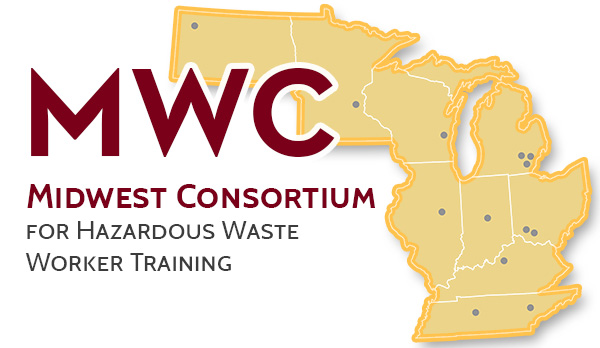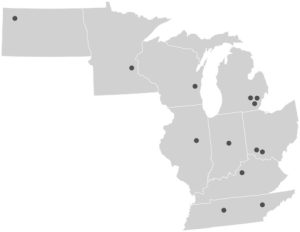
WHO WE ARE
The Midwest Consortium (MWC) for Hazardous Waste Worker Training has been funded since 1987 by the National Institute of Environmental Health Sciences (NIEHS) to develop, present and evaluate model worker training programs to workers and residents who may be exposed to hazardous substances, and to help employers comply with 29 CFR 1910.120.
The experienced, creative, and dedicated trainers at MWC centers have successfully trained hundreds of thousands of workers since 1987, increasing the collective training output over time and demonstrating impressive impacts.
This programming is delivered by 13 training centers in 9 states: Illinois, Indiana, Kentucky, Michigan, Minnesota, North Dakota, Ohio, Tennessee, and Wisconsin. Eight of the centers are equipment-based centers that focus most strongly on HAZWOPER and related training for workers at designated hazardous waste sites; treatment, storage, and disposal facilities; and in a broad range of emergency response roles. The five remaining centers are community-based centers that focus on helping workers and residents, particularly those from underserved populations, to recognize and react to hazardous materials in their communities.
WHAT WE DO
The centers provide training to workers at industrial sites, government agencies, tribal nations, healthcare systems, and elsewhere and to residents affiliated with faith-based groups, non-profit and community organizations, and neighborhood associations. Reported impacts of training demonstrate significant benefits to public health, particularly in the prevention and control of hazards. Participants indicate that they learn how to act more safely, and return to their workplaces and communities after training with a motivation to implement new procedures so that fundamental change will occur.
Our programs move beyond the pencil and paper classroom approach to actual hands-on field exercises using state-of-the-art equipment. In many programs, students practice and must demonstrate their ability to perform in fully encapsulated personal protective suits or in self-contained breathing apparatus. Others employ appropriate simulations of hazardous materials incidents and demonstrations of chemical reactions students might encounter on the job.
WHY WE DO THIS
The long-term goal of the MWC is to improve occupational and environmental health and safety throughout the region it serves. In the shorter-term, the MWC’s objective is to build capacity for workers to improve the workplace and for communities of workers and residents to recognize, prepare for, and recover from environmental exposures.
To achieve this objective, the overall aims for the MWC are to facilitate delivery of model training programs at MWC centers, enable training of diverse groups of participants who will not otherwise receive enough training about hazardous substances, and continually evaluate and improve the delivery of the MWC’s worker and community training. Achieving these aims will allow the MWC to continue to develop and implement innovative training, address emerging topics such as opioids and worker health, and extend community resilience training to a broader context as needs arise.
WHAT YOU GET
Kudos from the 2020 review by experts for NIEHS included:
- large and very active program
- leadership, staff and collaborators are extremely qualified – a strong, solid team
- use of innovative training, including the modular refresher program and Train-the-Trainer
- a good mix of classroom and hands-on training
- topical and timely training that tackles emerging threats
- community resilience programs and family preparedness – how youth are affected in the community
- serves states in a highly trafficked region of hazardous waste transportation, including the rail industry
- targets emerging needs of underserved populations

